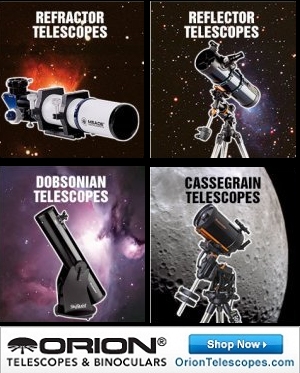Types of Binoculars Used for Astronomy
General-Purpose Binoculars
General-purpose binoculars are defined here as quality binoculars that are acceptable for birding and other hobbies besides astronomy. Such binoculars are lightweight enough to hold steady for periods of time and offer high-quality optics for astronomy viewing of dim night-sky objects. Good general-purpose binoculars here include 7X50 and 10x50 models from the major manufacturers such as Bushnell, Nikon, Fujinon and Swarovski. Don't spend less than $75 for good-quality, beginner binoculars.
Giant Binoculars
Giant binoculars are dedicated to astronomy and offer larger apertures and objectives for increased brightness and magnification of night-sky objects. Whereas a common spec for general-purpose binoculars might be 7x50 or 10x50, for giant binoculars it might be 20x80 or 25x100. Due to their increased size and weight, a heavy-duty tripod or other mount is a must for these instruments.
Under this category can also be included dual-Newtonian telescopes that are mounted close together to form a really, really large set of binoculars. Most of these are home-made, although there are a couple of telescope manufacturers that offer these.
Image-Stabilized Binoculars
Image-stabilized (IS) binoculars use different methods to stabilize the image, thus almost completely eliminating binocular shake. Some IS binoculars use battery-operated gyroscopes to stabilize the image, others use suspended prisms, while others use motion sensors to control the shape of the prisms. Views through IS binoculars are spectacular - you will be amazed at their capabilities. However, image-stabilized binoculars are pricey, starting at over $500 for a decent unit suited for astronomy. IS binoculars from Zeiss, Canon, and Fujinon are generally considered the best for astronomy.
Digital (Camera) Binoculars
Digital camera binoculars are a hybrid between binoculars and a digital camera and allow you to store photos of objects viewed. Digital binoculars aren't really suited for astronomy due to compromised optics quality in order to keep the price down, except for certain top-of-the-line models that start at over $1,200.
Bino-Viewers
Binoviewers aren't stand-alone binoculars per se, but rather is a dual, binocular eyepiece that fits into a telescopes in place of a normal eyepiece. Bino-viewers increase the contrast and details of images quite a bit since both eyes are doing the viewing. Bino-viewers are fairly expensive however, starting at about $500. They are great for reducing eyestrain and once you've used a set, you won't go back to single eyepieces.




